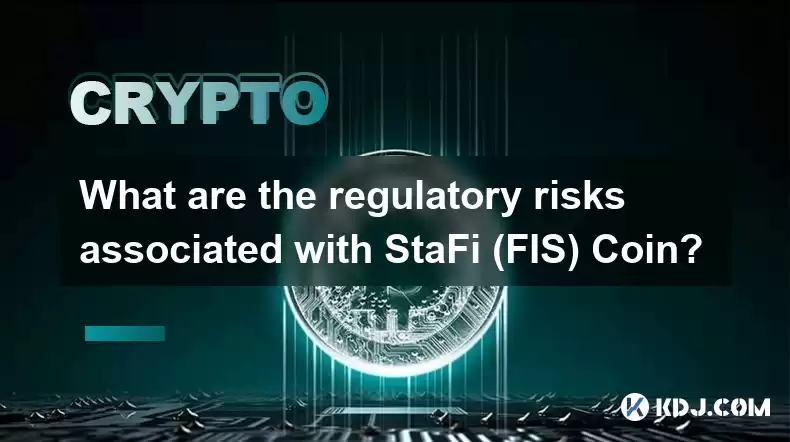-
 Bitcoin
Bitcoin $118600
0.36% -
 Ethereum
Ethereum $3855
1.06% -
 XRP
XRP $3.195
-0.09% -
 Tether USDt
Tether USDt $1.000
-0.04% -
 BNB
BNB $844.5
6.23% -
 Solana
Solana $191.3
2.83% -
 USDC
USDC $0.9997
-0.01% -
 Dogecoin
Dogecoin $0.2376
0.10% -
 TRON
TRON $0.3242
0.83% -
 Cardano
Cardano $0.8222
0.13% -
 Hyperliquid
Hyperliquid $45.26
6.53% -
 Sui
Sui $4.200
-2.56% -
 Stellar
Stellar $0.4336
-1.24% -
 Chainlink
Chainlink $18.86
0.28% -
 Hedera
Hedera $0.2796
-1.75% -
 Bitcoin Cash
Bitcoin Cash $583.3
-1.84% -
 Avalanche
Avalanche $27.06
8.09% -
 Litecoin
Litecoin $112.3
-1.16% -
 Toncoin
Toncoin $3.353
0.58% -
 UNUS SED LEO
UNUS SED LEO $8.968
-0.11% -
 Shiba Inu
Shiba Inu $0.00001395
-0.54% -
 Ethena USDe
Ethena USDe $1.001
-0.03% -
 Uniswap
Uniswap $10.76
0.69% -
 Polkadot
Polkadot $4.175
0.26% -
 Monero
Monero $326.7
1.07% -
 Bitget Token
Bitget Token $4.665
1.61% -
 Dai
Dai $0.9998
-0.02% -
 Pepe
Pepe $0.00001271
0.32% -
 Cronos
Cronos $0.1416
2.01% -
 Aave
Aave $299.3
1.15%
What are the regulatory risks associated with StaFi (FIS) Coin?
StaFi's innovative staking liquidity solution poses regulatory risks due to unclear classification under security laws, potential DAO status, and uncertain treatment of staking derivatives.
Jan 05, 2025 at 08:54 pm

Key Points
- StaFi Coin (FIS) faces several regulatory risks due to its innovative staking liquidity solution.
These risks include:
- Unclear regulatory treatment of FIS as a security or utility token
- Potential classification of StaFi as a decentralized autonomous organization (DAO)
- Regulatory uncertainty surrounding staking derivatives
Article Content
1. Unclear Regulatory Treatment of FIS as a Security or Utility Token
The Securities and Exchange Commission (SEC) has not yet issued clear guidance on how FIS should be classified under U.S. securities laws. FIS is a hybrid token that combines the characteristics of both a security and a utility token, which makes its regulatory status unclear.
- As a security, FIS would be subject to strict registration and reporting requirements under the Securities Exchange Act of 1934. This could significantly increase the compliance costs and legal risks for StaFi and its users.
- As a utility token, FIS would not be subject to the same level of regulation as a security. This would allow StaFi to operate with more flexibility and less regulatory oversight. However, if the SEC were to later determine that FIS is a security, StaFi could face significant penalties and fines.
2. Potential Classification of StaFi as a Decentralized Autonomous Organization (DAO)
StaFi is a decentralized autonomous organization (DAO), which means that it is governed by a set of rules encoded in software rather than by a central authority. This decentralized structure could create regulatory challenges for StaFi.
- DAOs are a relatively new type of organization, and there is no clear regulatory framework for them in most jurisdictions. This could lead to uncertainty about how StaFi should be regulated and how it would be treated in the event of a legal dispute.
- Additionally, DAOs can be difficult to hold accountable, as there is no clear legal entity that can be sued or prosecuted. This could make it difficult for regulators to enforce the law against StaFi or to protect investors from fraud or other misconduct.
3. Regulatory Uncertainty Surrounding Staking Derivatives
StaFi offers a unique staking liquidity solution that allows users to stake their assets while still retaining liquidity. This is accomplished through the use of staking derivatives, which are financial instruments that represent the right to receive a portion of the staking rewards generated by a staked asset.
- The regulatory treatment of staking derivatives is unclear in most jurisdictions. Regulators may view staking derivatives as securities, which would subject them to strict registration and reporting requirements. Alternatively, regulators may view staking derivatives as futures contracts or other types of financial instruments, which would subject them to different regulatory regimes.
- The uncertainty surrounding the regulatory treatment of staking derivatives could create risks for StaFi and its users. If regulators were to determine that staking derivatives are securities, StaFi could face significant compliance costs and legal liabilities.
FAQs
Is StaFi regulated by any government agency?
- StaFi is not currently regulated by any government agency. However, this could change in the future as regulators develop a clearer understanding of the risks associated with staking derivatives and other DeFi products.
What are the potential consequences if StaFi is classified as a security?
- If StaFi is classified as a security, it would be subject to strict registration and reporting requirements under the Securities Exchange Act of 1934. This could significantly increase the compliance costs and legal risks for StaFi and its users.
What are the potential consequences if StaFi is classified as a DAO?
- If StaFi is classified as a DAO, it could face regulatory challenges due to its decentralized structure and lack of a clear legal entity. This could make it difficult for regulators to enforce the law against StaFi or to protect investors from fraud or other misconduct.
Disclaimer:info@kdj.com
The information provided is not trading advice. kdj.com does not assume any responsibility for any investments made based on the information provided in this article. Cryptocurrencies are highly volatile and it is highly recommended that you invest with caution after thorough research!
If you believe that the content used on this website infringes your copyright, please contact us immediately (info@kdj.com) and we will delete it promptly.
- RUVI Token's Ripple Rally Potential: Audited AI Crypto Heats Up!
- 2025-07-29 04:50:12
- ADA Price, Cardano, SUI & Remittix: Decoding the Latest Crypto Moves
- 2025-07-29 04:50:12
- Solana, ARK Invest, and Staking: A New Era of Institutional Crypto?
- 2025-07-29 05:30:12
- XRP Holders, NIGHT Tokens, and the Airdrop Bonanza: What's the Deal?
- 2025-07-29 05:50:13
- BONK's Bullish Pennant and Volume Surge: Is $0.00004800 Next?
- 2025-07-29 05:10:12
- Mona Lisa Goes Digital: NFTs, Million-Dollar Dreams, and the Future of Art
- 2025-07-29 04:30:12
Related knowledge

What is Chainlink (LINK)?
Jul 22,2025 at 02:14am
Understanding Chainlink (LINK): The Decentralized Oracle NetworkChainlink is a decentralized oracle network designed to bridge the gap between blockch...

What is Avalanche (AVAX)?
Jul 22,2025 at 08:35am
What is Avalanche (AVAX)?Avalanche (AVAX) is a decentralized, open-source blockchain platform designed to support high-performance decentralized appli...

What is Polkadot (DOT)?
Jul 19,2025 at 06:35pm
Understanding the Basics of Polkadot (DOT)Polkadot (DOT) is a multi-chain network protocol designed to enable different blockchains to transfer messag...

What is Litecoin (LTC)?
Jul 23,2025 at 11:35am
Overview of Litecoin (LTC)Litecoin (LTC) is a peer-to-peer cryptocurrency that was created in 2011 by Charlie Lee, a former Google engineer. It is oft...

What is Monero (XMR)?
Jul 21,2025 at 10:07am
What is Monero (XMR)?Monero (XMR) is a decentralized cryptocurrency designed to provide enhanced privacy and anonymity for its users. Unlike Bitcoin a...

How to add indicators to Ethereum chart on TradingView?
Jul 19,2025 at 07:15am
What Is an Ethereum Chart on TradingView?The Ethereum chart on TradingView is a visual representation of the price movement of Ethereum (ETH) over a s...

What is Chainlink (LINK)?
Jul 22,2025 at 02:14am
Understanding Chainlink (LINK): The Decentralized Oracle NetworkChainlink is a decentralized oracle network designed to bridge the gap between blockch...

What is Avalanche (AVAX)?
Jul 22,2025 at 08:35am
What is Avalanche (AVAX)?Avalanche (AVAX) is a decentralized, open-source blockchain platform designed to support high-performance decentralized appli...

What is Polkadot (DOT)?
Jul 19,2025 at 06:35pm
Understanding the Basics of Polkadot (DOT)Polkadot (DOT) is a multi-chain network protocol designed to enable different blockchains to transfer messag...

What is Litecoin (LTC)?
Jul 23,2025 at 11:35am
Overview of Litecoin (LTC)Litecoin (LTC) is a peer-to-peer cryptocurrency that was created in 2011 by Charlie Lee, a former Google engineer. It is oft...

What is Monero (XMR)?
Jul 21,2025 at 10:07am
What is Monero (XMR)?Monero (XMR) is a decentralized cryptocurrency designed to provide enhanced privacy and anonymity for its users. Unlike Bitcoin a...

How to add indicators to Ethereum chart on TradingView?
Jul 19,2025 at 07:15am
What Is an Ethereum Chart on TradingView?The Ethereum chart on TradingView is a visual representation of the price movement of Ethereum (ETH) over a s...
See all articles

























































































